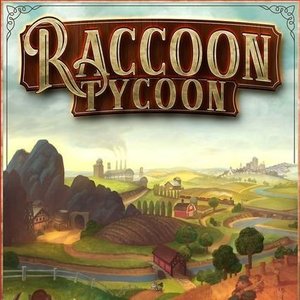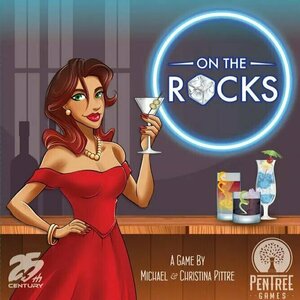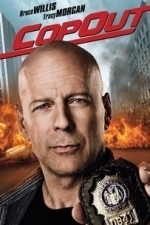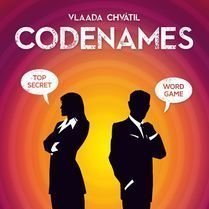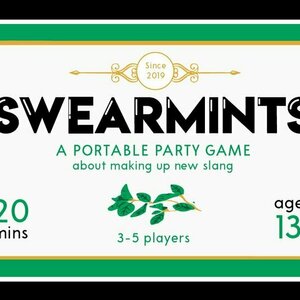Search
Search results
Purple Phoenix Games (2266 KP) rated Raccoon Tycoon in Tabletop Games
Jun 12, 2019
ALERT! This game has railroads! ALERT #2! This is NOT a train game! That makes ME feel lots better. Right now in my life train games and war games scare me. I don’t have the time, and frankly I do not think I am quite smart enough for either. But then this game comes along and it looks intimidating at first. Like games I am not smart enough to play, and that’s a huge compliment. Not because I think I am smart, but because this game seems like it would be way more complex than it actually is.
Technically, the players are these cute little Victorian-era anthropomorphized animals trying to become the wealthiest of all Astorians (the city is called Astoria). This is measured by Victory Points. You gain VPs in several ways and the actions you take on your turn are limited.
What are these actions you can take on your turn? You may take one action on your turn: play a card from your hand to receive commodities (in really great meeples) and increase the price of commodities to be sold, sell commodities from your supply and decrease the price of the commodities by the number sold, purchase a town card using commodities, purchase a building using money earned, or begin an auction of a railroad using money. Each of these actions ultimately affects your opponents as they either adjust the market price of commodities, removes certain coveted assets from the offer, or otherwise depletes their resources. Also, there are mission cards in the box that are just not referenced in the rulebook, but two are to be dealt to the players and one chosen as a hidden goal for endgame scoring.
I will be honest. I would not normally be attracted to this style of game, and I may not have ever purchased it in the wild based on the box. I have zero games like it in my collection, and have not really played many that are similar. BUT, I absolutely love this game. Once you get the hang of the different actions you can really start planning ahead and creating your strategy based on what your opponents are doing and how the commodity market is shaping up. You can block opponents from monopolizing similar types of railroads, preventing them from scoring bulk points. You can just concentrate on liquidating assets for maximum return. All of this can be done by completing just one action on your turn, and it keeps you interested in what your opponents are doing as well. That is a mark of a great game. This isn’t just multiplayer solitaire at all.
Components. The box has really really great artwork on it. In fact, the whole game LOOKS incredible. I have seen some remarks that the artwork on the building tiles is in a different style from the rest of the game and it detracts from their enjoyment and immersion. I disagree. When we played the first time I asked if my opponent noticed the difference in art style and if it detracted from the enjoyment of the game. Nope. The game board is good quality and laid out well. The commodities tokens are really great. I do wish, however, that the meeple shape matched that of the icon shown throughout the game. This is apparent in coal and iron, specifically. The others are fine and they match well enough, but there is a missed opportunity. The town and railroad cards are of good quality, and the building tiles are very thick and chunky – and ultimately not necessary to be so since you don’t really handle them much, but it’s always nice to have deluxe-feeling components. The paper money is of good quality – for paper money, that is. The best component of the game – the 1st player marker. I didn’t get it in the shot below because it just woodent (I did that on purpose) fit! It is a HUGE brown raccoon meeple and it’s marvelous. Know what else I really appreciate? THERE IS NO INSERT. Nothing to throw away as soon as you open the box because undoubtedly once you punch everything and try to put it in the useless insert there is no way so you just throw it away anyway and are left feeling like maybe they could have saved some time and money not worrying about an insert that is actually pointless and detrimental to setup and teardown (I’m looking at you, pointless Fantasy Flight box-space-eater inserts).
I don’t know if you can tell from my verbosity in this review, but I adore this game. It is sleek, it is well-produced, and ultimately it is incredibly fun to play. We at Purple Phoenix Games give this one a VERY enthusiastic 14 / 18.
https://purplephoenixgames.wordpress.com/2019/03/01/raccoon-tycoon-review/
Technically, the players are these cute little Victorian-era anthropomorphized animals trying to become the wealthiest of all Astorians (the city is called Astoria). This is measured by Victory Points. You gain VPs in several ways and the actions you take on your turn are limited.
What are these actions you can take on your turn? You may take one action on your turn: play a card from your hand to receive commodities (in really great meeples) and increase the price of commodities to be sold, sell commodities from your supply and decrease the price of the commodities by the number sold, purchase a town card using commodities, purchase a building using money earned, or begin an auction of a railroad using money. Each of these actions ultimately affects your opponents as they either adjust the market price of commodities, removes certain coveted assets from the offer, or otherwise depletes their resources. Also, there are mission cards in the box that are just not referenced in the rulebook, but two are to be dealt to the players and one chosen as a hidden goal for endgame scoring.
I will be honest. I would not normally be attracted to this style of game, and I may not have ever purchased it in the wild based on the box. I have zero games like it in my collection, and have not really played many that are similar. BUT, I absolutely love this game. Once you get the hang of the different actions you can really start planning ahead and creating your strategy based on what your opponents are doing and how the commodity market is shaping up. You can block opponents from monopolizing similar types of railroads, preventing them from scoring bulk points. You can just concentrate on liquidating assets for maximum return. All of this can be done by completing just one action on your turn, and it keeps you interested in what your opponents are doing as well. That is a mark of a great game. This isn’t just multiplayer solitaire at all.
Components. The box has really really great artwork on it. In fact, the whole game LOOKS incredible. I have seen some remarks that the artwork on the building tiles is in a different style from the rest of the game and it detracts from their enjoyment and immersion. I disagree. When we played the first time I asked if my opponent noticed the difference in art style and if it detracted from the enjoyment of the game. Nope. The game board is good quality and laid out well. The commodities tokens are really great. I do wish, however, that the meeple shape matched that of the icon shown throughout the game. This is apparent in coal and iron, specifically. The others are fine and they match well enough, but there is a missed opportunity. The town and railroad cards are of good quality, and the building tiles are very thick and chunky – and ultimately not necessary to be so since you don’t really handle them much, but it’s always nice to have deluxe-feeling components. The paper money is of good quality – for paper money, that is. The best component of the game – the 1st player marker. I didn’t get it in the shot below because it just woodent (I did that on purpose) fit! It is a HUGE brown raccoon meeple and it’s marvelous. Know what else I really appreciate? THERE IS NO INSERT. Nothing to throw away as soon as you open the box because undoubtedly once you punch everything and try to put it in the useless insert there is no way so you just throw it away anyway and are left feeling like maybe they could have saved some time and money not worrying about an insert that is actually pointless and detrimental to setup and teardown (I’m looking at you, pointless Fantasy Flight box-space-eater inserts).
I don’t know if you can tell from my verbosity in this review, but I adore this game. It is sleek, it is well-produced, and ultimately it is incredibly fun to play. We at Purple Phoenix Games give this one a VERY enthusiastic 14 / 18.
https://purplephoenixgames.wordpress.com/2019/03/01/raccoon-tycoon-review/
Purple Phoenix Games (2266 KP) rated On the Rocks in Tabletop Games
Sep 7, 2021
I have to come clean right at the top of this one. I have not really tried a whole lot of different cocktails in my life. I have been mostly a beer kind of guy. Not that I am opposed to cocktails at all – in fact, I have really enjoyed most of the drinks I have tried. That said, I wish I was more hip so I would know all the drink lingo and really know why someone would want their concoction shaken and not stirred. So, I went into this one thinking I would learn the secret finally. But I didn’t. I did have a good time playing it though.
“On the Rocks is a marble drafting, cocktail recipe fulfillment game for 1-4 players. It is NOT a drinking game.” – straight from the game’s BGG page. So what does that mean? Well, this one is a variation of the “I cut, you choose” style game, but HEAVILY themed around bartending and enhanced with additional fun mechanics. The winner is the player who amasses the most amount of money by the end of their shift.
DISCLAIMER: We were provided a copy of this game for the purposes of this review. This is a retail copy of the game, so what you see in these photos is exactly what would be received in your box. I do not intend to cover every single rule included in the rulebook, but will describe the overall game flow and major rule set so that our readers may get a sense of how the game plays. For more in depth rules, you may purchase a copy online or from your FLGS. -T
To setup, consult the rulebook, as there are many steps. However, once setup, the game should look similar to the photo below. Choose the starting player and the mixology competition can begin!
On the Rocks is played over several rounds with each player completing specific steps. The first step is optional, and is Tip Cards. Players will accumulate Tip Cards throughout the game, and each one features a special ability that may be used at this time. The next step may also be optional, depending on if the active player had received a Complaint card previously. Complaints must be completed on this step and is pretty much a wrench thrown in the plans by competitors.
Once these (possibly) optional steps have been completed the active player then takes the 2d6 and Rolls them. This number determines how many ingredient marbles are to be pulled from the bag and added into play. For the cost of one ingredient marble, the active player may manipulate the rolled dice by flipping it to its opposite face. Next, the player will Draft the number of marbles from the bag they rolled in the previous step. From these drafted marbles the player will Mix them into the blue Jigger Bowls in the middle of the table one at a time, a la Mancala (oh that’s fun to say: A LA MANCALA!). Then the player will Select & Place a jigger of marbles from the table onto their player board. Placing the corresponding marbles onto the drinks is how recipes can be completed. If any ingredients were selected from the jigger but not placed, the player must then place the ingredients into the Extra Ingredients shot glasses on the top portion of the player board, to Save for later use.
When the ingredient marbles have been placed and saved, the player must then complete the Resolve step. Several ingredient marbles are “Premium” or “Spill” marbles. Premium marbles (golden) allow the player to select ANY two ingredients from the draw bag and the Premium marble is then discarded to the coaster in the middle of the table. The black Spill marble forces the active player to draw a Spill card from the deck and complete its action. It also during the Resolve step that the player may complete a recipe card by discarding the drink’s ingredients to the bag and flipping its recipe card face-down. If the entire order (all of the face-up recipe cards) is completed, the active player’s round ends and they notate this by placing one of the three lemon tokens on their player board. Some round end cleanup is performed, like drawing another set of 3 or 4 drink recipes for an order, and the player’s turn is over.
Once a player has completed their third order of drinks, they must indicate “Last Call” to the other players at the table. This informs the other players that they have one last turn to earn any extra money before the game ends. When the game has been finished, final scoring is performed and the winner is they who earned the most money throughout the night. The other players must immediately fix the winner a drink, or buy the winner a shot. Okay, those aren’t in the rulebook, but merely suggestions for the revised second edition…
Components. For those that follow our reviews, you know I am a sucker for games with great components, and this one definitely delivers for me. The aesthetics and art style are just perfect, the double-layer boards are always lovely, and the rubber jiggers are excellent. I cannot see anything that can be improved in terms of components, and I completely expected that because this was published by Pentree Games and 25th Century Games (one of my favorite publishers in the business). The game looks and feels deluxe, which is VERY satisfying.
I think that the Pittre duo of Michael and Christina really knocked it out of the park with this one. Wait, this is their first game design?? And it’s incredible? Okay okay, I’ll be keeping my eye on you two. On the Rocks is a light game with excellent table presence and some difficult choices presented. Now, the choices may be TOOOOOO difficult for some gamers, especially our AP-prone players. Carefully planning out each ingredient’s distribution into the jigger bowls can send them into a frenzy, so I have advised to choose one or two bowls they wish to buff and concentrate on hitting those with the marbles they want, and just randomly place the other ingredients. I know that is a big ask, but this game is supposed to take 45-90 minutes, not 45-90 hours. My other gripe about the game is the color-dependence of the ingredient marbles. I am sorry to all my colorblind friends out there, but I am unable to see how you might keep a possible 12 different marbles straight in your heads while simultaneously remembering the state of marbles in each jigger bowl. I hope I am completely wrong, as I do not suffer from colorblindness, and please do let me know if this is still playable for those gamers.
These gripes aside, everything else about the game is fabulous. I love being able to manipulate my dice rolls (yes, with a cost) to have ultimate control of the number of marbles pulled from the bag. That bag, however, takes control away immediately unless I draft a bunch of clear (wild) or golden marbles to affect my final placements. I also adore struggling to choose which recipes to concentrate on first, and weighing the possibilities of completing the higher value recipes, or blitzing the smaller ones first.
Oh, and the Spills cards? They can be real pains in the booty. These effectively give the active player the ability to completely botch another players’ plans by discarding their ingredient marbles from their player board. Not enough player interaction? How about negative Tip cards, which are earned by completing a recipe, that impede a competitor’s progress by making them complete the Tip card before being able to move on with their plans, or by limiting their marble selection to two instead of the entire bowl? Yeah, this has player interaction for sure.
Again, I like a good drink now and then, just as much as the next person. However, I have never been a bartender, and I do not plan on ever becoming one. I could not ever imagine having to compete with other bartenders for tip money either, especially if it is as brutally cutthroat as On the Rocks portrays it to be. I will, however, play a game where all that “fun” is diluted to dice, cards, and marbles. I was looking through my collection recently and noticed have embarrassingly few games with an adult beverage theme. If you are like me and require more games depicting fun with alcohol, then I strongly urge you to check out On the Rocks. I feel like I can finally graduate from Fuzzy Navels and Stone Sours just by playing this game and really upping my liquor acumen. Purple Phoenix Games gives this one a delicious 5 / 6. It seems readily available for consumption, but please do not try to go drink for drink with this game. It’s not designed to be a drinking game… or is it?
“On the Rocks is a marble drafting, cocktail recipe fulfillment game for 1-4 players. It is NOT a drinking game.” – straight from the game’s BGG page. So what does that mean? Well, this one is a variation of the “I cut, you choose” style game, but HEAVILY themed around bartending and enhanced with additional fun mechanics. The winner is the player who amasses the most amount of money by the end of their shift.
DISCLAIMER: We were provided a copy of this game for the purposes of this review. This is a retail copy of the game, so what you see in these photos is exactly what would be received in your box. I do not intend to cover every single rule included in the rulebook, but will describe the overall game flow and major rule set so that our readers may get a sense of how the game plays. For more in depth rules, you may purchase a copy online or from your FLGS. -T
To setup, consult the rulebook, as there are many steps. However, once setup, the game should look similar to the photo below. Choose the starting player and the mixology competition can begin!
On the Rocks is played over several rounds with each player completing specific steps. The first step is optional, and is Tip Cards. Players will accumulate Tip Cards throughout the game, and each one features a special ability that may be used at this time. The next step may also be optional, depending on if the active player had received a Complaint card previously. Complaints must be completed on this step and is pretty much a wrench thrown in the plans by competitors.
Once these (possibly) optional steps have been completed the active player then takes the 2d6 and Rolls them. This number determines how many ingredient marbles are to be pulled from the bag and added into play. For the cost of one ingredient marble, the active player may manipulate the rolled dice by flipping it to its opposite face. Next, the player will Draft the number of marbles from the bag they rolled in the previous step. From these drafted marbles the player will Mix them into the blue Jigger Bowls in the middle of the table one at a time, a la Mancala (oh that’s fun to say: A LA MANCALA!). Then the player will Select & Place a jigger of marbles from the table onto their player board. Placing the corresponding marbles onto the drinks is how recipes can be completed. If any ingredients were selected from the jigger but not placed, the player must then place the ingredients into the Extra Ingredients shot glasses on the top portion of the player board, to Save for later use.
When the ingredient marbles have been placed and saved, the player must then complete the Resolve step. Several ingredient marbles are “Premium” or “Spill” marbles. Premium marbles (golden) allow the player to select ANY two ingredients from the draw bag and the Premium marble is then discarded to the coaster in the middle of the table. The black Spill marble forces the active player to draw a Spill card from the deck and complete its action. It also during the Resolve step that the player may complete a recipe card by discarding the drink’s ingredients to the bag and flipping its recipe card face-down. If the entire order (all of the face-up recipe cards) is completed, the active player’s round ends and they notate this by placing one of the three lemon tokens on their player board. Some round end cleanup is performed, like drawing another set of 3 or 4 drink recipes for an order, and the player’s turn is over.
Once a player has completed their third order of drinks, they must indicate “Last Call” to the other players at the table. This informs the other players that they have one last turn to earn any extra money before the game ends. When the game has been finished, final scoring is performed and the winner is they who earned the most money throughout the night. The other players must immediately fix the winner a drink, or buy the winner a shot. Okay, those aren’t in the rulebook, but merely suggestions for the revised second edition…
Components. For those that follow our reviews, you know I am a sucker for games with great components, and this one definitely delivers for me. The aesthetics and art style are just perfect, the double-layer boards are always lovely, and the rubber jiggers are excellent. I cannot see anything that can be improved in terms of components, and I completely expected that because this was published by Pentree Games and 25th Century Games (one of my favorite publishers in the business). The game looks and feels deluxe, which is VERY satisfying.
I think that the Pittre duo of Michael and Christina really knocked it out of the park with this one. Wait, this is their first game design?? And it’s incredible? Okay okay, I’ll be keeping my eye on you two. On the Rocks is a light game with excellent table presence and some difficult choices presented. Now, the choices may be TOOOOOO difficult for some gamers, especially our AP-prone players. Carefully planning out each ingredient’s distribution into the jigger bowls can send them into a frenzy, so I have advised to choose one or two bowls they wish to buff and concentrate on hitting those with the marbles they want, and just randomly place the other ingredients. I know that is a big ask, but this game is supposed to take 45-90 minutes, not 45-90 hours. My other gripe about the game is the color-dependence of the ingredient marbles. I am sorry to all my colorblind friends out there, but I am unable to see how you might keep a possible 12 different marbles straight in your heads while simultaneously remembering the state of marbles in each jigger bowl. I hope I am completely wrong, as I do not suffer from colorblindness, and please do let me know if this is still playable for those gamers.
These gripes aside, everything else about the game is fabulous. I love being able to manipulate my dice rolls (yes, with a cost) to have ultimate control of the number of marbles pulled from the bag. That bag, however, takes control away immediately unless I draft a bunch of clear (wild) or golden marbles to affect my final placements. I also adore struggling to choose which recipes to concentrate on first, and weighing the possibilities of completing the higher value recipes, or blitzing the smaller ones first.
Oh, and the Spills cards? They can be real pains in the booty. These effectively give the active player the ability to completely botch another players’ plans by discarding their ingredient marbles from their player board. Not enough player interaction? How about negative Tip cards, which are earned by completing a recipe, that impede a competitor’s progress by making them complete the Tip card before being able to move on with their plans, or by limiting their marble selection to two instead of the entire bowl? Yeah, this has player interaction for sure.
Again, I like a good drink now and then, just as much as the next person. However, I have never been a bartender, and I do not plan on ever becoming one. I could not ever imagine having to compete with other bartenders for tip money either, especially if it is as brutally cutthroat as On the Rocks portrays it to be. I will, however, play a game where all that “fun” is diluted to dice, cards, and marbles. I was looking through my collection recently and noticed have embarrassingly few games with an adult beverage theme. If you are like me and require more games depicting fun with alcohol, then I strongly urge you to check out On the Rocks. I feel like I can finally graduate from Fuzzy Navels and Stone Sours just by playing this game and really upping my liquor acumen. Purple Phoenix Games gives this one a delicious 5 / 6. It seems readily available for consumption, but please do not try to go drink for drink with this game. It’s not designed to be a drinking game… or is it?
Gareth von Kallenbach (980 KP) rated Cop Out (2010) in Movies
Aug 8, 2019
For Detectives Jimmy Monroe (Bruce Willis), and Paul Hodges (Tracy Morgan), life on the beat is about to become very dangerous and complex. In the new movie “Cop Out” the two buddies find themselves at odds with their supervisor after a case goes horribly wrong and looking at a thirty day unpaid suspension.
This is a disaster for Jimmy as his only daughter is about to get married and he needs the money to pay for the wedding to avoid his ego having to absorb the insult of having his former wives new husband pick up the tab.
Undaunted Jimmy decides to sell a prized baseball card to cover the 48K wedding tab, and looks forward to being able to make his daughters dream wedding a reality. Things do not go as planned as Jimmy has his card stolen which forces Paul and Jimmy to take drastic actions to recover it.
The duo track down the card thief (Seann William Scott), and learn that he traded the card to a local drug lord who is as passionate about baseball as he is deadly to all those who stand in his way.
Jimmy and Paul soon realize that they must deal with the enemy in an effort to retrieve the card as his request that they find his stolen Mercedes seems a small price to pay for the safe return of the prized card.
Upon locating the Mercedes, Jimmy and Paul learn that a much larger game is afoot and find themselves on the run for goons and their fellow cops as they try to keep a key witness safe and retrieve the card.
The film has some very funny moments and Director Kevin Smith gets some good laughs from the material but the film suffers from a disjointed plot and some glaring holes which requires some major leaps of faith from the audience.
For example, we are expected to believe that a couple of thieves would steal a car and sell it but nowhere in the process would the thieves or new owner bother to look in the trunk much less hear the noises coming from within.
We are given a few bits about Jimmy and Paul, such as Paul’s paranoia regarding his wife and his inability to question a suspect, but the duo are so thinly developed the seem to have been crafted from the Buddy Cop film 101 guide.
Smith has always been a favorite of mine as I have always liked the way he blends biting satire and humor with interesting characters and conversations.
Action does not seem to yet be an area of comfort for Smith as he does pull off the action sequences in the film but they seem very restrained for what audiences have come to expect from today’s action films.
This time out Smith was limited to directing and editing and the film seems to be badly in need of his writing abilities.
Given his past issues with trying to do films for a big studio, it was a surprise to me that Smith did the film which was originally entitled “The Two Dicks”.
Thankfully his skilled handling of the cast and humor is what tips the scales in the films favor making “Cop Out” a flawed but at times very funny film.
This is a disaster for Jimmy as his only daughter is about to get married and he needs the money to pay for the wedding to avoid his ego having to absorb the insult of having his former wives new husband pick up the tab.
Undaunted Jimmy decides to sell a prized baseball card to cover the 48K wedding tab, and looks forward to being able to make his daughters dream wedding a reality. Things do not go as planned as Jimmy has his card stolen which forces Paul and Jimmy to take drastic actions to recover it.
The duo track down the card thief (Seann William Scott), and learn that he traded the card to a local drug lord who is as passionate about baseball as he is deadly to all those who stand in his way.
Jimmy and Paul soon realize that they must deal with the enemy in an effort to retrieve the card as his request that they find his stolen Mercedes seems a small price to pay for the safe return of the prized card.
Upon locating the Mercedes, Jimmy and Paul learn that a much larger game is afoot and find themselves on the run for goons and their fellow cops as they try to keep a key witness safe and retrieve the card.
The film has some very funny moments and Director Kevin Smith gets some good laughs from the material but the film suffers from a disjointed plot and some glaring holes which requires some major leaps of faith from the audience.
For example, we are expected to believe that a couple of thieves would steal a car and sell it but nowhere in the process would the thieves or new owner bother to look in the trunk much less hear the noises coming from within.
We are given a few bits about Jimmy and Paul, such as Paul’s paranoia regarding his wife and his inability to question a suspect, but the duo are so thinly developed the seem to have been crafted from the Buddy Cop film 101 guide.
Smith has always been a favorite of mine as I have always liked the way he blends biting satire and humor with interesting characters and conversations.
Action does not seem to yet be an area of comfort for Smith as he does pull off the action sequences in the film but they seem very restrained for what audiences have come to expect from today’s action films.
This time out Smith was limited to directing and editing and the film seems to be badly in need of his writing abilities.
Given his past issues with trying to do films for a big studio, it was a surprise to me that Smith did the film which was originally entitled “The Two Dicks”.
Thankfully his skilled handling of the cast and humor is what tips the scales in the films favor making “Cop Out” a flawed but at times very funny film.
BadgerMuffin (48 KP) rated Magic: The Gathering in Tabletop Games
Jun 3, 2019
Many Groups Across the UK (2 more)
Quick to Play
Great to play anywhere
Not the easiest to learn (1 more)
Not a Cheap Hobby
A Game That After Years Still Isn't Tapped.
First thing's First. Some advice one of my closest friends gave me when I started.
'Buy a basic deck, play it, once you see the flaws THEN upgrade it. Don't buy cards and try to make a new deck if you haven't played.'
This is great advice for this hobby. Me being me. I didn't follow it, and I have regretted it.
BUT, on with the review.
So firstly, the artwork.
The artwork is insanely good, and all cards are different. The quality is fantastic and the amount of detail they put into each card is incredible. I now collect cards just for the artwork.
Secondly, Gameplay.
There are about 30 different variations of colour combinations, meaning you can make multiple decks and play each of them hundreds of ways. You can kill players by making them run out of cards or by bringing their health down to zero. Each deck built will work differently.
I personally play this casually, meaning I can use any card from any version, this means you don't need to keep checking the date on your cards. (Plus it allows you to screw over your friends much more).
All in All, I love this game, and it allows you to play games anywhere. I tend to carry a deck everywhere I go. This is a great way to pass time while waiting for a train or food.
TL;DR
-Great Fun
-Not Cheap to Play
-Quick games (or can take a few hours)
'Buy a basic deck, play it, once you see the flaws THEN upgrade it. Don't buy cards and try to make a new deck if you haven't played.'
This is great advice for this hobby. Me being me. I didn't follow it, and I have regretted it.
BUT, on with the review.
So firstly, the artwork.
The artwork is insanely good, and all cards are different. The quality is fantastic and the amount of detail they put into each card is incredible. I now collect cards just for the artwork.
Secondly, Gameplay.
There are about 30 different variations of colour combinations, meaning you can make multiple decks and play each of them hundreds of ways. You can kill players by making them run out of cards or by bringing their health down to zero. Each deck built will work differently.
I personally play this casually, meaning I can use any card from any version, this means you don't need to keep checking the date on your cards. (Plus it allows you to screw over your friends much more).
All in All, I love this game, and it allows you to play games anywhere. I tend to carry a deck everywhere I go. This is a great way to pass time while waiting for a train or food.
TL;DR
-Great Fun
-Not Cheap to Play
-Quick games (or can take a few hours)
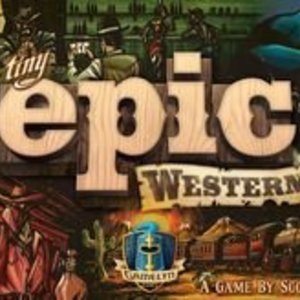
Tiny Epic Western
Tabletop Game
HOOK: Poker meets worker-placement DESCRIPTION: The West is growing day by day, and you’re...
Dpaint43 (16 KP) rated Codenames in Tabletop Games
May 29, 2019 (Updated May 29, 2019)
Let the right ones in
In this party game of abstracted espionage, you have the task of using clue words to have teammates figure out who they should let in and who they should keep out. There is a 5×5 grid of "codenames" that are on the table. Common words like fish, key or skipping. As the speaker for your team, you know which codenames are meant for your team and which are for the other team by using a grid representation only the two team speakers could see. 8 of the codename agents are for your team and 8 for the other (the grid also has a color around it which adds an additional agent for one team but then they get the privilege of going first). There are also 8 neutral citizens that end the turn if chosen. Then there is the dark agent. If he is chosen by the team, that team loses. Once each turn the speaker will give a one word clue (something that correlates with one or more codename cards) followed by a number (how many codename cards it correlates to). Your team has to pick at least one card on the table from the clue. Get it right and they get to choose again (one number more than the number you gave after the clue is the amount of guesses they can get a turn) or choose not to push their luck and stop. Get it wrong and that might let an agent for the other team in, a citizen or worst of all the dark agent that loses the game. This keeps going until a team successfully gets all their codename agents in. A great party game for unlimited amounts of people breaking into two teams. Laughs and accusations fly. Maybe the best party game in years and available in many forms that keep growing (basic, adult words, Disney, pictures only, marvel...etc)

Chicken Jump - Crazy Traffic
Games
App
Imagine a deadly racing game - where you are the pedestrian! Chicken Jump is an easy to grab and...

Strife: Legacy of the Eternals
Tabletop Game
Once more, conflict rages across the world of Aerim. You are one of the Eternals, a group of...
Purple Phoenix Games (2266 KP) rated Swearmints in Tabletop Games
Feb 5, 2021
You know how sometimes you happen to make up a new slang for something and maybe even once or twice it has caught on? At least locally. Well I do not think many of mine have gone anywhere, but now is my chance to make a name for myself as the slang-king in this little mint tin game.
Swearmints is a small card game of voting for the best explanations of silly combination new-slang. The gameplay is familiar but the hilarity is all new.
DISCLAIMER: We were provided a prototype copy of this game for the purposes of this review. These are preview copy components, and I do not know for sure if the final components will be any different from these shown. You are invited to download the rulebook, back the game through the Kickstarter campaign launching March 9, 2021, or through any retailers stocking it after fulfillment. -T
To setup choose a Mint Master (the first dealer) and give them the mint tin with the mint cubes inside. Shuffle the cards to create a draw pile. The Mint Master will then deal each player two cards and the game may begin!
During a round each player will consult their two cards, choosing a word from each, and combining the words to make a new phrase. The cards have four words printed on each side so players will have access to 16 total words. Once all players have chosen their new term they will go around the table introducing and explaining their new slang term to the Mint Master. As all players have finished the Mint Master will choose their favorite new term by awarding one mint cube to the winning player. Players may also earn bonus mint cubes for using two alliterative words, and another mint cube for using two rhyming words. A new Mint Master is then crowned around the table and they thusly deal two cards to the players to begin a new round.
Play continues in this fashion until the tin runs out of mint cubes. The player with the most mint cubes is the winner!
Components. This game is a bunch of cards and green translucent cubes in a mint tin. The cards are fine and double-sided. The cubes are also fine. There is no art to speak of in the game, and no theme. So from me, even if this were the final version (which again, I am not sure) the components are all fine and no complaints from me.
The game is obviously a new variation of the Apples to Apples mechanic where one player is the judge and awards the winner with their opinions. This is tried and true and works for so many games. I feel it also works here. This is not at all a difficult game to learn, teach, or play. In fact, I played a very G-rated game of it with my 4-year-old son and he absolutely loved it. Of course, I had to choose appropriate words for him to use, but he technically played the game and played it well.
Swearmints is a small game that can easily fit in a pocket or backpack and be enjoyed by almost all people in all scenarios. Need something to play with Gramps and Grammie over the weekend? Swearmints. Need something to warmup game night with new players to open them up some? Swearmints. Need an icebreaker at work (once work resumes in-person)? Swearmints. There are so many scenarios I can see this being very successful to have on hand and it can be played very innocently or very inappropriately, depending on present company. That’s what makes this a great new spin on the A2A gameplay: its adaptability and portability.
If you are like me, you could always use a little package of excitement in your pocket. Wait. I mean, you could appreciate toting around a small and unassuming little game that can fit many gaming opportunities as they arise. Should you be looking for that little firecracker, then consider backing Swearmints on Kickstarter when the campaign launches in March. You never know when you might need to break it out to ease the tension in the room or to initiate a muggle into the gaming world.
Swearmints is a small card game of voting for the best explanations of silly combination new-slang. The gameplay is familiar but the hilarity is all new.
DISCLAIMER: We were provided a prototype copy of this game for the purposes of this review. These are preview copy components, and I do not know for sure if the final components will be any different from these shown. You are invited to download the rulebook, back the game through the Kickstarter campaign launching March 9, 2021, or through any retailers stocking it after fulfillment. -T
To setup choose a Mint Master (the first dealer) and give them the mint tin with the mint cubes inside. Shuffle the cards to create a draw pile. The Mint Master will then deal each player two cards and the game may begin!
During a round each player will consult their two cards, choosing a word from each, and combining the words to make a new phrase. The cards have four words printed on each side so players will have access to 16 total words. Once all players have chosen their new term they will go around the table introducing and explaining their new slang term to the Mint Master. As all players have finished the Mint Master will choose their favorite new term by awarding one mint cube to the winning player. Players may also earn bonus mint cubes for using two alliterative words, and another mint cube for using two rhyming words. A new Mint Master is then crowned around the table and they thusly deal two cards to the players to begin a new round.
Play continues in this fashion until the tin runs out of mint cubes. The player with the most mint cubes is the winner!
Components. This game is a bunch of cards and green translucent cubes in a mint tin. The cards are fine and double-sided. The cubes are also fine. There is no art to speak of in the game, and no theme. So from me, even if this were the final version (which again, I am not sure) the components are all fine and no complaints from me.
The game is obviously a new variation of the Apples to Apples mechanic where one player is the judge and awards the winner with their opinions. This is tried and true and works for so many games. I feel it also works here. This is not at all a difficult game to learn, teach, or play. In fact, I played a very G-rated game of it with my 4-year-old son and he absolutely loved it. Of course, I had to choose appropriate words for him to use, but he technically played the game and played it well.
Swearmints is a small game that can easily fit in a pocket or backpack and be enjoyed by almost all people in all scenarios. Need something to play with Gramps and Grammie over the weekend? Swearmints. Need something to warmup game night with new players to open them up some? Swearmints. Need an icebreaker at work (once work resumes in-person)? Swearmints. There are so many scenarios I can see this being very successful to have on hand and it can be played very innocently or very inappropriately, depending on present company. That’s what makes this a great new spin on the A2A gameplay: its adaptability and portability.
If you are like me, you could always use a little package of excitement in your pocket. Wait. I mean, you could appreciate toting around a small and unassuming little game that can fit many gaming opportunities as they arise. Should you be looking for that little firecracker, then consider backing Swearmints on Kickstarter when the campaign launches in March. You never know when you might need to break it out to ease the tension in the room or to initiate a muggle into the gaming world.
